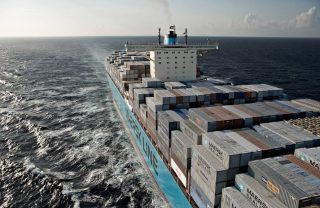The overcapacity in the container shipping sector seems to have finally struck a nerve as owners abstained from ordering new boxship capacity for the first time in years.
According to BIMCO, the first quarter of this year was the first time since the second quarter of 2009 that three months have passed without any new orders signed.
“The lack of orders reflects the very poor market conditions and the fact that 2015 saw 2.2 million TEU being ordered. This was the second ever largest volume of containership capacity ordered annually– second only to 2007 when 3.25 million TEU was contracted,” BIMCO’s Chief Analyst, Peter Sand says.
Owners are staying clear from new orders also due to the delivery of new containership capacity, which BIMCO claims has exceeded its expectations with 240,730 TEU delivered into the fleet in Q1.
On the other hand, recycling of superfluous ships has been stepped up slightly in 2016, with 105,509 TEU leaving the fleet.
As a result, the net growth of the fleet in Q1 was 0.7%. For the full year BIMCO expects 3.4%, slightly up from its January estimate.
March saw the record broken for the largest containership ever to be demolished. The 15 year-old, 6,479 TEU post-panamax “CSAV Papudo” was sold to breakers in India at a strong USD 295 per ldt and became only the second ship with a capacity of more the 6,000 TEU to be demolished. By mid April owners have sent 115,570 TEU to the breakers primarily in India.
However, years of negative fleet growth need to pass for the suplly-demand balance to be restored, as BIMCO’s forecast of 250,000 TEU to be broken up in 2016 only cuts into the fleet by a fraction representing 1.26% of the current fleet size.
Separately, the one-sided focus on cutting costs per transported TEU by ordering ever larger ships continues along the lines of “bigger is better”, BIMCO added.
In 2015, 119 ships with a 10,000+ TEU capacity accounted for 87% of the total new capacity being ordered. The other 118 ships ordered, ranging in size from 1,000 TEU to 5,300 TEU accounted for only 13%.
This year, the average containership size for delivered ships is going down from the all-time-high 7,952 TEU in 2015 to around 7,000 TEU per ship.
In terms of outlook, BIMCO doesn’t expect demand to grow at a pace needed to match the capacity of new ships entering the fleet.
Hence, extensive idling of the modern and efficient ships in the fleet and continued demolition of the inefficient ships will improve the market both in the short and mid-term.
“For the longer term management of capacity, a low level of contracting for newbuildings must be maintained. 2016 is off to a good start on all these parameters,” Sand concludes.
Source: http://worldmaritimenews.com/



